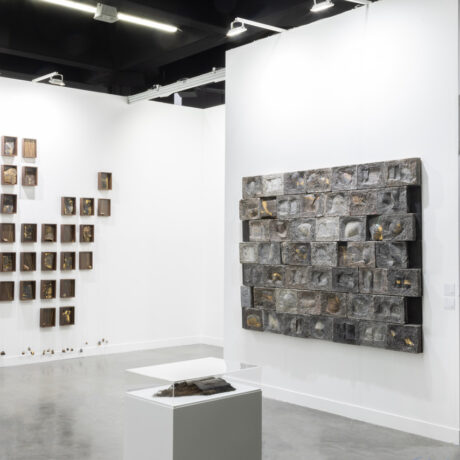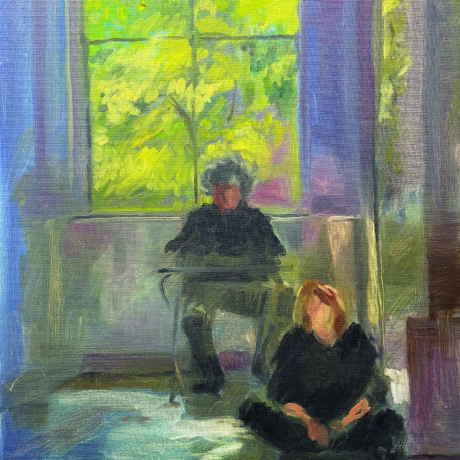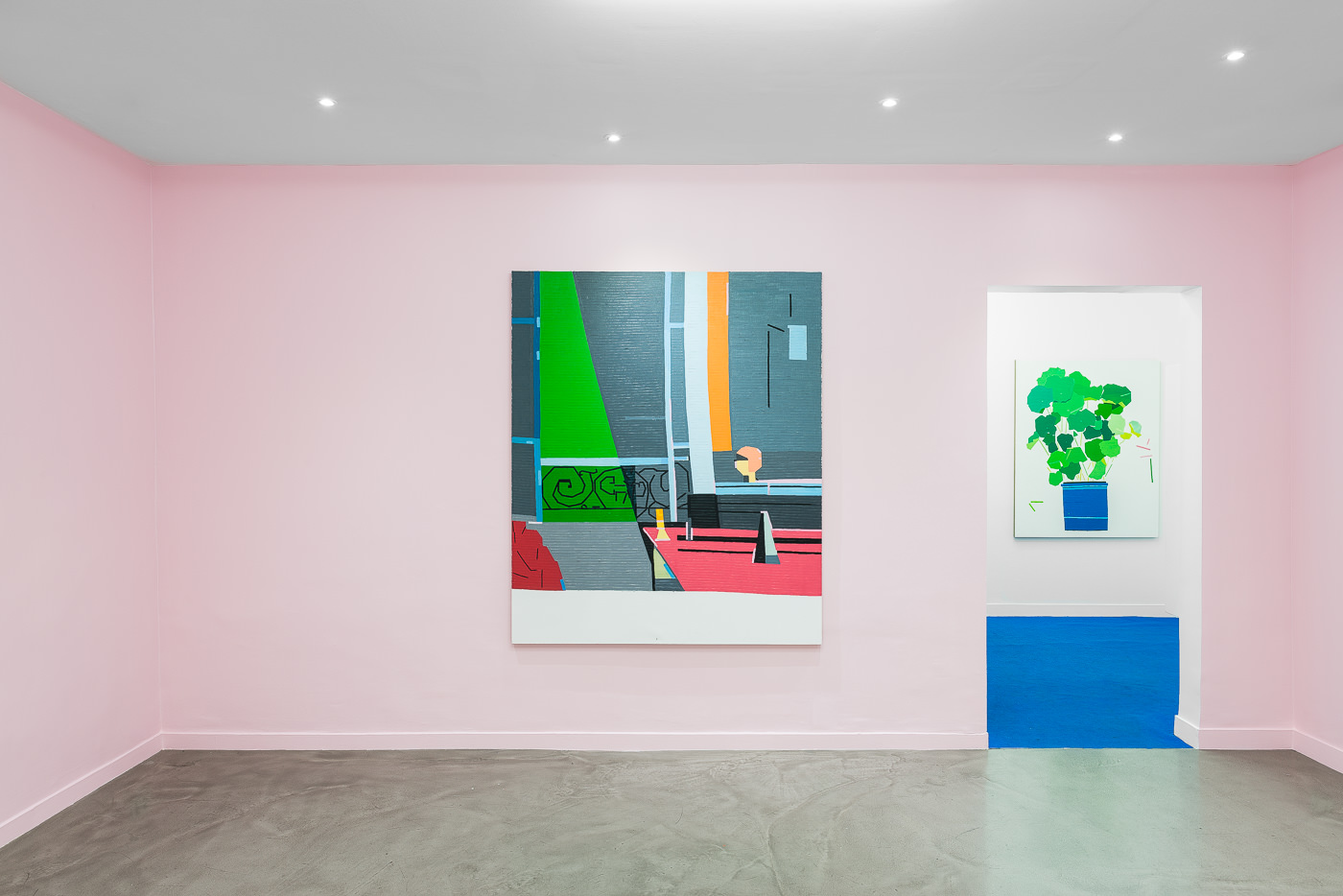
When I first talked to Yanai a few days later, on Skype—he in his studio in South Tel Aviv, me on a sofa in my living room in London—I felt an immediate bond. It wasn’t just his warm and energetic way of talking, and his boundless enthusiasm for everything, for the world (though not unmarked by pain), but his understanding of rootlessness, something that pervades his painting.
Since childhood, Yanai moved almost every year, first from Israel to the US, and then from city to city, eventually, in adulthood, winding up back in Israel, but still, with the restless existence of the modern artist, a gypsy nature deeply embedded in him. You get this sense in his paintings, that are seductively graphic, but also placeless—neatly organised interiors and exteriors that don’t speak of home but of our attempt to locate ourselves in the world that exists outside us.
As T.S. Eliot once wrote, “We shall not cease from exploration, and the end of all our exploring will be to arrive where we started and know the place for the first time.”
That, for me, is the feeling Yanai’s paintings touch on.
Ahead of unveiling his exhibition in Paris, I asked Yanai a few questions, some of which I already knew the answer to, but I asked them anyway.
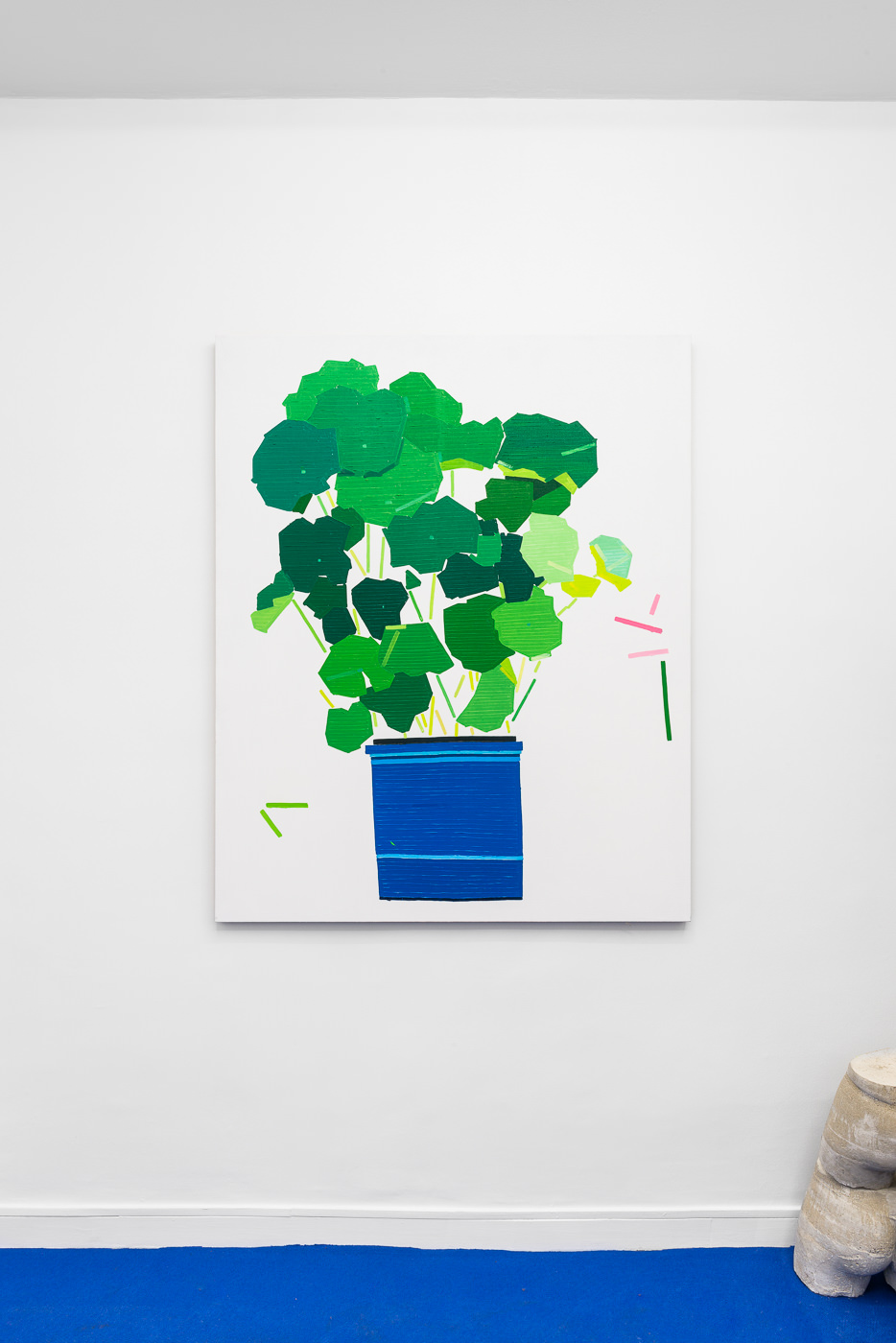
You’ve just been in L.A. and I saw you took a photo outside Hockney’s studio…
Yeah, I was just in LA. It’s a really strange place for me. All of these hamburger chains that I never tried, like Carls, Jack in the Box, Fatburger, etc. Driving from the airport I get so excited. It’s like I never come here and yeah, my paintings have such an LA feel. I was thinking to myself, why is that? Maybe it’s like Haifa colours and suburban Boston combined. I grew up in Haifa in northern Israel but moved to the suburbs of Boston at age seven in the mid-80s. Maybe LA is right in the middle as regards to architecture, colour and light. Those low houses, this American dream of the middle class. This real freedom, to drive, to pioneer, but with this light, especially in winter, this sharp light.
With Hockney, I had to see where he made all these paintings. It’s funny, and you have to believe me, but I’m not that into Hockney, seriously. Just those early paintings he made have a way of burning into your brain. That frozen image thing really attracts me. I think it’s an early Renaissance thing. I’m much more into Piero della Francesca, Matisse, Cezanne, and modern cinema.
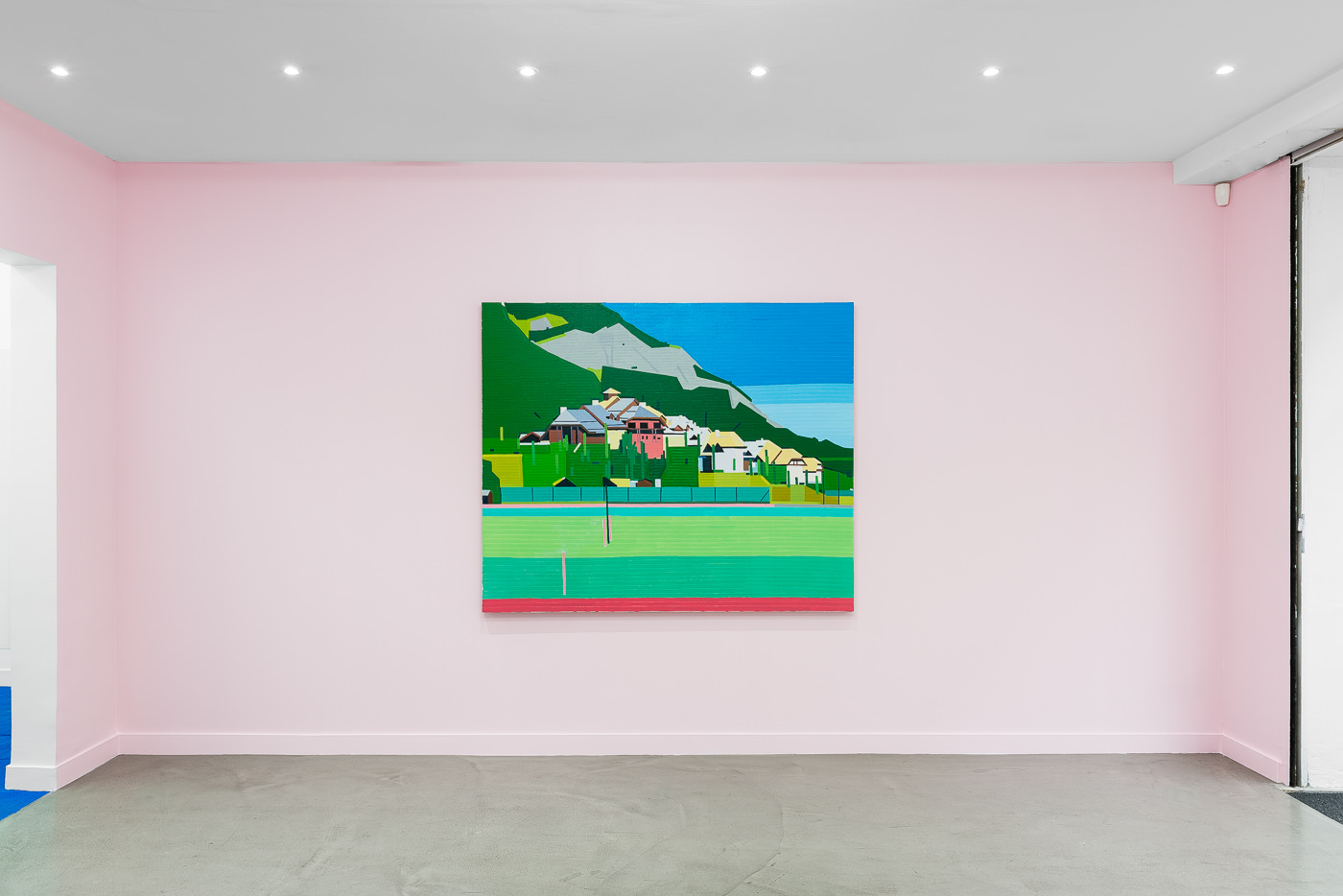
Next: Paris, where you’re opening your new one-man exhibition, Love of Beginnings.
Yeah, I’m excited to show in Paris again. It’s a city where people really look and have a real and genuine curiosity. I was lucky enough to be at the opening of The Shchukin Collection during the last FIAC, everyone at the opening was looking. Looking profoundly at all of these paintings. It was so refreshing. It’s OK to be a little less social sometimes.
With this show at Galerie Derouillon, I just wanted to do some ambitious works. The show is really three works of the same size. But each work comes from a completely different cognitive situation and time. I think that’s exciting. You can really do anything with painting.
You told me before what interests you is the “non-relationship” between these three pivotal works in the show?
Yes, exactly! One is an interior of my kitchen, a space that I’m in almost every day, the second is from a trip advisor photo that some French tourist put online. It’s of a Club Med Resort that I was at with my kids and my girlfriend and her family, and the third is a remix, a transcription of a 100-year-old painting. So conceptually this show makes no sense! It’s the dark spaces between these paintings and the experiences that led to these paintings that the show is about. And that’s what makes the book Love of Beginnings resonate so much with this group of paintings.
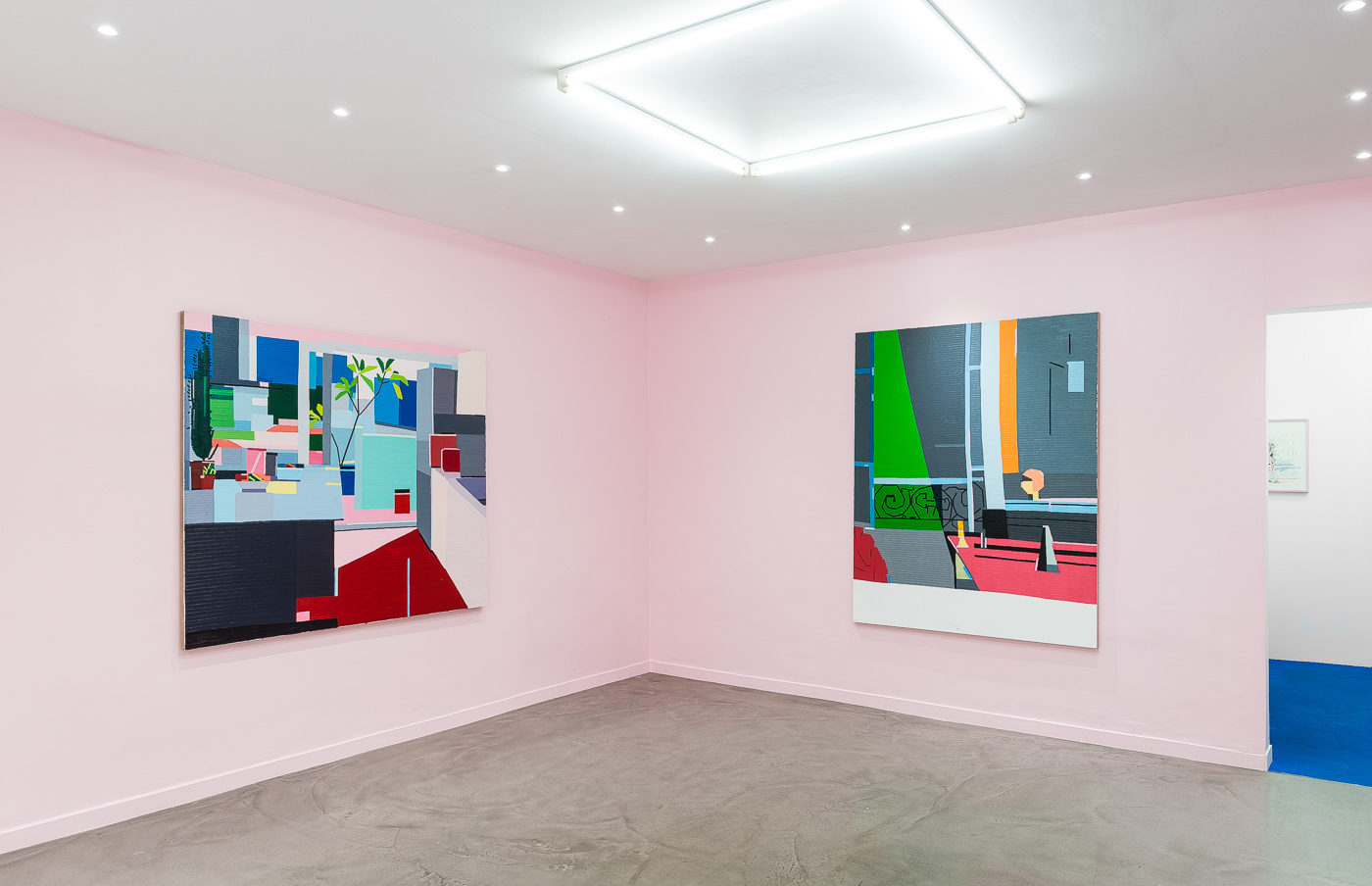
The exhibition takes its title from a little-known autobiographical novel by JB Pontalis. What is it that moves you about that book?
J.B Pontalis was a writer, editor and psychoanalyst. His autobiography was given to me by a shrink I used to see over ten years ago. It’s such a fantastic book. The discourse of the book deliberately avoids a set format and has all of these holes in the linear structure. It felt like my life! Like all of these periods of my life that feel like black holes. The book is ahistorical, a lot like the best paintings of the 20th and 21st century. I re-read it now and it’s even better than I remembered.
I enjoyed thinking about the act of painting as a psychological response when I was looking at your paintings: as you’ve said, it’s a slow, primitive technique. At the same time, you’re not a traditionalist in your world view, you love new media. A painting doesn’t move. So why paint, now?
Absolutely. I think it’s all of these clashes. Because really, I can’t stand all of these nostalgic painters, and I’m super jealous of all of these artists who know how to do installation, video, performance. They can work on aeroplanes. It’s true, painting is so primitive, it’s taking pigment ground in oil and applying it to a surface. But, like David Hockney said: nothing can replace painting. Especially in this age! I embrace everything, all social media, web, everything. It’s this schizophrenia that keeps me sane. Making images slowly, painting, and living today. I’m not against anything, I’m for everything.
‘Love of Beginnings’ is showing at Galerie Derouillon until 29 April. galeriederouillon.com
